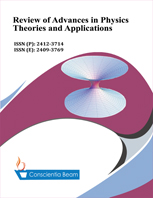Landau-Pekar Bipolaron in Singlet and Triplet States
DOI:
https://doi.org/10.18488/journal.75/2014.1.1/75.1.9.33Abstract
We give an overview of studies a bipolaron stability by variational method. For bipolaron formations, a relation is established between the variational principle and the virial theorem optimizing the electronic wave functions. We present a large number of qualitative and quantitative arguments, which indicate that the Landau-Pekar bipolaron is an axially-symmetrical formation. Much attention is paid to the analysis of the influence of the Coulomb electron-electron correlations on the stability of a large bipolaron. In detail we analyzed the criteria for determining the optimal wave functions. It is established that a step-by-step increase in the flexibility of the electronic wave function due to the electron correlations does not stabilize a one-center bipolaron. We show after into account of electron-electron correlations a singlet bipolaron retains spatial axially-symmetrical. At the same time, the electron-excited triplet states of Landau-Pekar bipolaron have spherical symmetry. The results of Kasirina and Lakhno are based on the one-center bipolaron model are incorrect. Presented evidence that the correct application of the variational method and correct account of electron-electron correlations only increase the binding energy of the bipolaron but symmetry of Hartree-Fock approximation can not change. We adduce proofs which point to methodological errors of one-center bipolaron model as well as arising from their calculations incorrect physical consequences. As illustrated in this review the axially symmetric Landau-Pekar bipolaron can correctly interpret the experimentally detected spectroscopic data.

